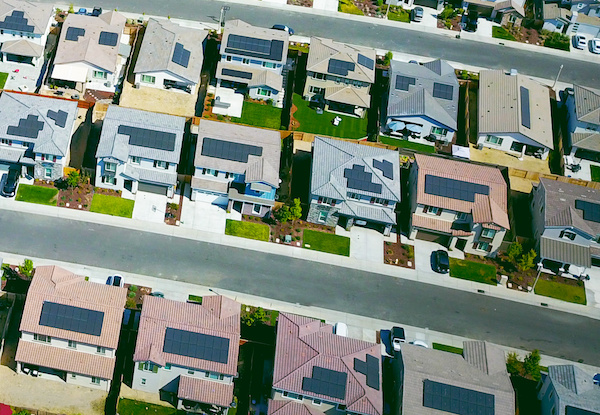Solar Lenders, Protect Thyselves
In 2022, the residential solar market attained its highest annual growth rate since 2015. Brighter days are ahead, too, with the residential solar market projected to grow steadily from 2025–2030 at an average annual rate of 8 percent. What’s more, the Solar Energy Industries Association forecasts 15 percent of U.S. homes will have a solar system installed by 2030.
Such rapid growth presents an opportunity for lenders, but also exposes them to risk. This article looks at the most common risks faced by solar lenders, and what steps they can take to protect their investments.
Risks to loan payoffs
The cost of a residential solar system has plummeted in the last decade, and an increased range of incentives and loan options has driven ownership to record heights. Currently, the average amount of most solar loans is approximately$20,000.
Solar loans often have 20 or 30-year terms, and the probability of a property being sold during the life of the loan is high. Around 6 percent of single-family homes in the U.S. are sold every year; on average, any given home sells once every seven years. The sale of a property with an unpaid solar loan poses a significant risk to lenders. An additional risk is a total loss of property caused by house fires or natural disasters.

A homeowner delinquent on the monthly payment presents another danger. There has been a rise in delinquency rates, coupled with a significant drop in solar loan prepayments, thanks to increases in interest rates and inflation.
While repossession of solar panels is possible in the event a homeowner defaults on a secured solar loan, it comes with its own unique challenges. First of all, removal of solar panels is expensive, and may damage the roof in the process. Second, the used equipment is difficult to re-sell and its tax credits are not transferable, making for an often-unviable repossession process.
How can solar lenders best protect their interests?
Lien on me
In order to secure their loan, a lender can file a lien on the solar system at the same time a homeowner obtains a loan. There are several lien options, and lenders should be aware of the differences between them.
A junior loan, also known as a second mortgage, may be available to most homeowners of varying income levels and credit scores, depending on the lending program criteria. While a junior loan is easy to maintain, it is more complex to initiate and release, and has a slower turnaround time. Lenders can automate this process.
A PACE tax lien is for low-income homeowners, paid via their tax statements, and is only available in certain jurisdictions. Lenders need to meet certain requirements to be able to file this lien.
A mechanic’s lien is for homeowners of varying income levels and credit scores. It enables the lender to initiate foreclosure on the property in case of a default by the debtor. This lien is very complex to initiate and requires jurisdictional expertise. It is viewed negatively by homeowners.
The Uniform Commercial Code Financing Statement, or UCC, is another lien type. This lien is the most common among solar lenders, and available for homeowners of all income levels and credit scores. A UCC is easy to initiate and release. It requires jurisdictional expertise and maintenance throughout the life of the loan, but lenders can opt to automate the process. A UCC is scalable to allow growth. Many lenders have determined that to fully protect a loan, a UCC lien should be filed with the secretary of state and at the county level. This helps to establish ownership of the equipment and mitigate the risk of a property being sold or refinanced without loan payoff. A UCC lien increases the likelihood of the lender being paid back. If a homeowner defaults or declares bankruptcy, this lien may enable the solar lender to have its claim prioritized over those of other creditors.

A sunny future?
A final element of risk is the booming nature of the market itself. Solar scales rapidly, so it’s not uncommon in today’s market for lenders to jump from 10 customers to as many as 200 new customers in a short timeframe. In addition, solar loan portfolio sales are quite common.
Lenders should consider solutions that enable scaling without taxing their internal operations, as well as secure the value of their portfolio in case of a sale.
Solar lenders face multiple pain points, such as risks that jeopardize loan payoffs, operational and scaling challenges, and the need for maintaining overall portfolio health for securitization or resale. To address these concerns, lenders should evaluate their short- and long-term goals to determine the best way to address their solar lending risks.
Suzie Neff is a Senior Enterprise Sales Executive with Wolters Kluwer Compliance Solutions. For more than 18 years, Neff has assisted solar companies with their lending programs and has helped lenders, financiers, and investors to secure, perfect, and protect their investments.
Wolters Kluwer | www.wolterskluwer.com
Author: Suzie Neff
Volume: 2023 November/December










.png?r=8954)

